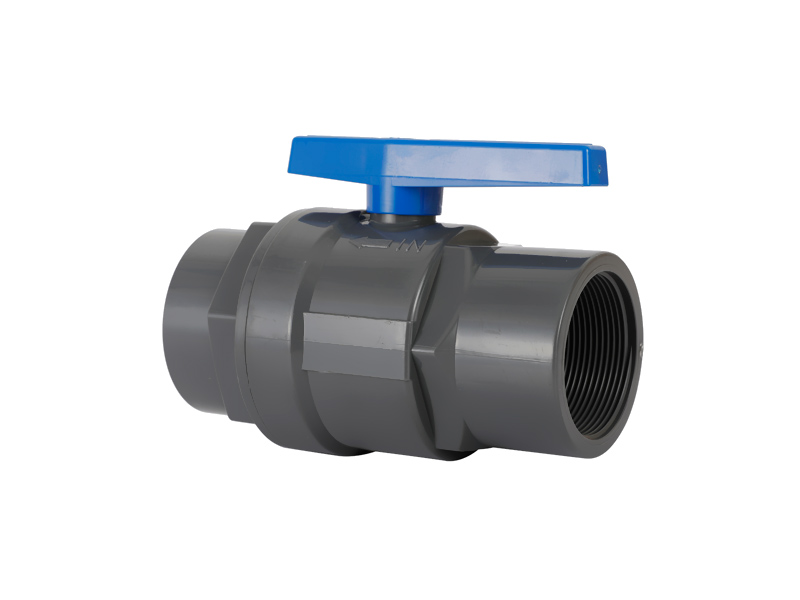How does the male ball valve design enable smooth and effortless on/off operation?
The male ball valve design is a key characteristic...
MORE >>















Having the right valve pressure is important for your e […]
Having the right valve pressure is important for your equipment, and it can make a difference in your operation. For example, if you are having trouble achieving a high flow rate, you may need to replace your valve with one that is able to handle higher pressure. There are several types of valves that you can use to achieve this. You can use a Pilot-operated relief valve, a Spring-loaded relief valve, or an Air-to-close valve.Compared to direct acting relief valves, pilot-operated relief valves offer a number of advantages. For example, they can be used to limit leakage and minimize the loss of product. They also offer safety, efficiency and reliability. These valves are often used in power generation, offshore industry and oil and gas production.Pilot-operated relief valves are designed to withstand high backpressure. They can be paired with a smaller direct acting relief valve. They typically cost more than conventional relief valves. They are also a good choice for high temperature applications.Pilot valves are usually used in upstream applications. They are slower than direct acting reliefs, which are designed to open quickly. In addition, pilot valves make noise, which is a nuisance to staff.
Standard Plastic PVC OEM Two Pieces Ball Valve

Use: Agriculture irrigation/Mariculture/Swimming pool/Engineering construction
Style Number: XE0111-XE01116
Standard: CNS/JIS/DIN/BS/ANSI/NPT/BSPT
Color: Many colors available for choice
Material: UPVC
Sample: Free provided
Certificate: ISO9001:2015, SGS, GMC, CNAS
Delivery: 7-30days
Packing: Carton, Polybag, Color Box or Customized
They also take longer to respond to changes in system pressure.Using Direct-acting relief valves for valve pressure can be an effective solution to clipping pressure spikes in pressure-compensated circuits. These valves are fast acting, and have a simple design. They are often used to clip pressure spikes in pressure-compensated hydraulic pumps. They are an economical choice.Direct-acting relief valves are usually comprised of a poppet or ball. The poppet is held on a seat by a spring. When the pressure in the system drops below the set point, the poppet opens. This allows media to flow above the poppet, and then through the outlet port. The poppet may be equipped with a seal or a thermoplastic seal.Direct-acting relief valves tend to be noisy. They are also more sensitive to changes in system pressure. The valve may not work well in very high pressure applications.Having a choked flow due to valve pressure may damage the valve or pump or even cause damage to the downstream area. It's important to identify it and avoid the damage in the first place.
A choked flow due to valve pressure occurs when an upstream pressure is more than twice the downstream pressure. The flow through the valve does not increase unless the downstream pressure is lowered. The flow is limited by the pressure ratio, but can still improve with an increase in upstream pressure.This is due to the law of conservation of energy, which states that total energy in a flow stream is constant. In the case of a gas, the limiting pressure drop is a good example of the law.Generally, Air-to-close valves are spring-return valves that operate in one of two ways. One is by using a spring to hold the valve open, while the other is by requiring air to close. Regardless of the type of valve, the spring must be strong enough to withstand the stresses that can occur in the actuation process.When the valve is opened, the air pressure acts on the diaphragm and cylinder to move the valve stem to a position where the valve plug is at the stated flow level.
A spring holds the valve open and a pneumatic positioner opens the valve in response to an input signal.When the valve is closed, the air pressure is unable to move the diaphragm to its original position. This results in a high pressure drop and can result in choked flow.Typically, a spring-loaded relief valve is used to provide overpressure protection for a pressurized system. It is a valve which opens when the upstream pressure exceeds a set pressure, and closes when the pressure falls below a set pressure. There are two main types of spring-loaded relief valves: conventional and balanced.Spring-loaded relief valves come in a wide variety of materials, but the material selected for the device must be compatible with the fluid it is meant to handle. For example, stainless steel is often chosen for high-temperature, corrosive fluids. In addition, the material selected for the valve's body must be compatible with the operating temperature range. The material's weight is a factor, as well.

The male ball valve design is a key characteristic...
MORE >>
In today's modern world, efficient and reliable wa...
MORE >>
Copyright ©All rights reserved:Zhejiang Xier Plastic Valve Lead Co.,LTD. PVC Ball Valves Manufacturers Technical support: HWAQ  浙公网安备 33060402001174号
浙公网安备 33060402001174号

 English
English España
España عربي
عربي